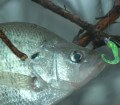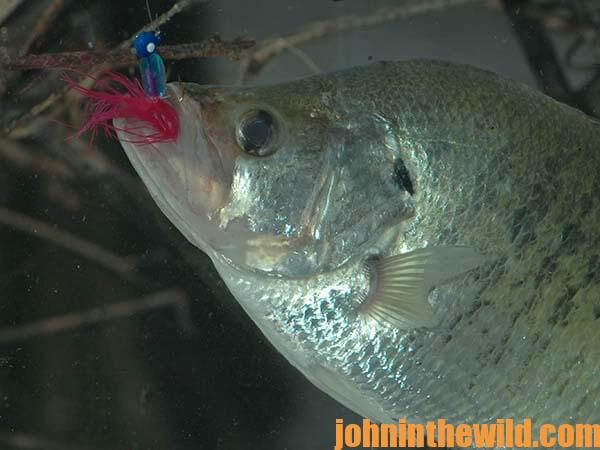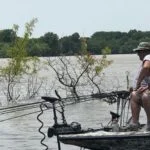John’s Note: During the spring when the weather and the water heat-up, the crappie move into the shallows near the bank to spawn. But oftentimes a late winter cold front can drive the crappie from the banks to open water. Also in many sections of the U.S., the water’s still cold or cool in mid-March to the end of March. As I investigated how to find deep-water crappie not on the banks in the spring and at other times of the year, I learned that the most-consistent place to catch crappie at any time of the year is away from the bank.
There are basically three reasons why crappie move into deep water just as other fish do – they’re looking for a water temperature where they can be comfortable, they’re searching for the right amount of oxygen, and they’re hunting food.
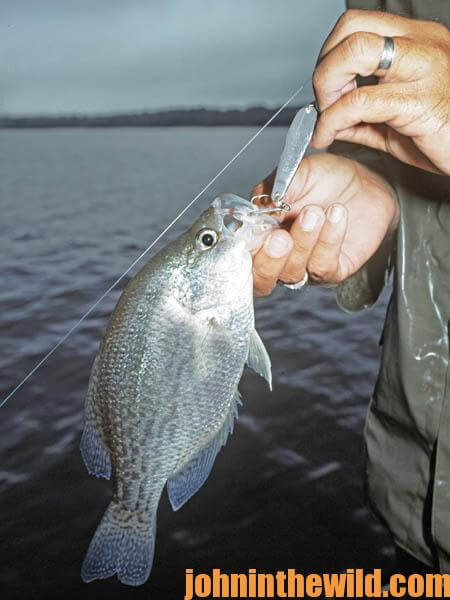 During the hot summertime, crappie often will move out to the river channels, especially if they’re in a lake being used to generate hydroelectric power, because the current being pulled through the lake usually will have the coolest and the most-highly oxygenated water. When the current begins to run, the baitfish may go on a feeding spree, and the predator fish, like the crappie, will follow the baitfish.
During the hot summertime, crappie often will move out to the river channels, especially if they’re in a lake being used to generate hydroelectric power, because the current being pulled through the lake usually will have the coolest and the most-highly oxygenated water. When the current begins to run, the baitfish may go on a feeding spree, and the predator fish, like the crappie, will follow the baitfish.
One of the most-productive tactics I’ve learned in the last few years is to use a bass technique to catch crappie on these creek channels in the summer months. Once you find underwater cover or brush on the edges of main river channels, you’ll have discovered a place where baitfish can hold that breaks the current in an area where the water’s cool and highly oxygenated. This location will home many fish, including bass, crappie and white bass. Even hybrids and saltwater stripers will cruise this area to find the baitfish. One of the most-effective lures for catching bass during the hot summertime in the cover is the 3/4-ounce jigging spoons, which can be lowered down through the cover and fished vertically where the bass are holding. But what every bass fisherman knows is this tactic also catches crappie – big crappie. However, you must make a slight modification to the jigging spoon for the bait to produce the maximum number of crappie with the least amount of hassle.
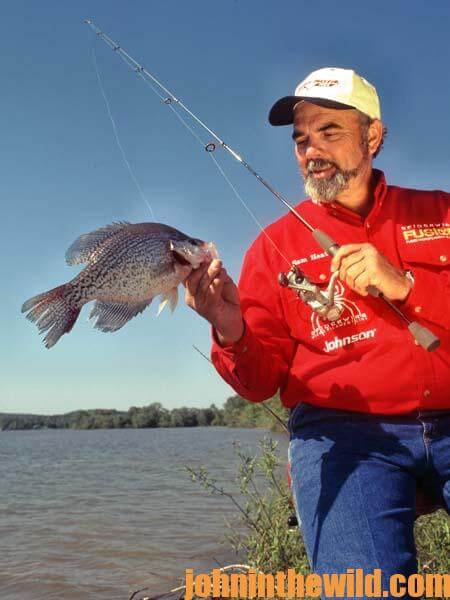 All anglers realize the advantage of having a sharp hook to take fish, because a sharp hook will cut its way into the mouth or jaw of the fish the angler is trying to catch. Although a sharp hook penetrates deeper and faster than a dull hook does, a sharp hook also will stick into cover faster and easier than a dull hook. Because a sharp hook cuts the fish’s skin, it also leaves a bigger hole in the fish’s mouth, which means a fish with a paper-thin mouth, like a crappie, easily can work the hook out of its mouth. When using a 3/4-ounce jigging spoon to catch crappie, take a small file and barely pass it over the tips of each one of the treble hooks on the jigging spoon. By slightly dulling the hook in this manner, the hook punches a hole in the mouth of the crappie rather than slicing the mouth of the crappie. That hole will be harder for the hook to work free from when the angler is reeling the crappie up from deep water than the cut a sharp hook makes. A dull hook is also much easier to get out of cover than a sharp hook.
All anglers realize the advantage of having a sharp hook to take fish, because a sharp hook will cut its way into the mouth or jaw of the fish the angler is trying to catch. Although a sharp hook penetrates deeper and faster than a dull hook does, a sharp hook also will stick into cover faster and easier than a dull hook. Because a sharp hook cuts the fish’s skin, it also leaves a bigger hole in the fish’s mouth, which means a fish with a paper-thin mouth, like a crappie, easily can work the hook out of its mouth. When using a 3/4-ounce jigging spoon to catch crappie, take a small file and barely pass it over the tips of each one of the treble hooks on the jigging spoon. By slightly dulling the hook in this manner, the hook punches a hole in the mouth of the crappie rather than slicing the mouth of the crappie. That hole will be harder for the hook to work free from when the angler is reeling the crappie up from deep water than the cut a sharp hook makes. A dull hook is also much easier to get out of cover than a sharp hook.
When using the jigging-spoon tactic on cover in the edge of an old river channel, the angler doesn’t have to set the hook. By simply reeling down when he feels the strike, the fisherman will allow the hook to poke through the tender mouth of the crappie without making a large hole. Slow, steady pressure will bring the fish out of the cover and into the boat. In the wintertime, when the crappie are once again moving out to the deep river channels in search of warmer water, this same method will produce big slabs all winter. Since the 3/4-ounce jigging spoon is a large bait, an angler will catch few little crappie on it. However, at the end of a day, using this deep-water technique, sportsmen usually have more pounds of crappie in their live wells or ice chests than if they have used smaller baits and caught more little crappie.
To learn much more about crappie fishing, get John E. Phillips’ Kindle eBooks and some print books, “Crappie: How to Catch Them Fall & Winter,” “Crappie: How to Catch Them Spring and Summer” and “Catch Cold Water Crappie Now.” Click here to get these books.


